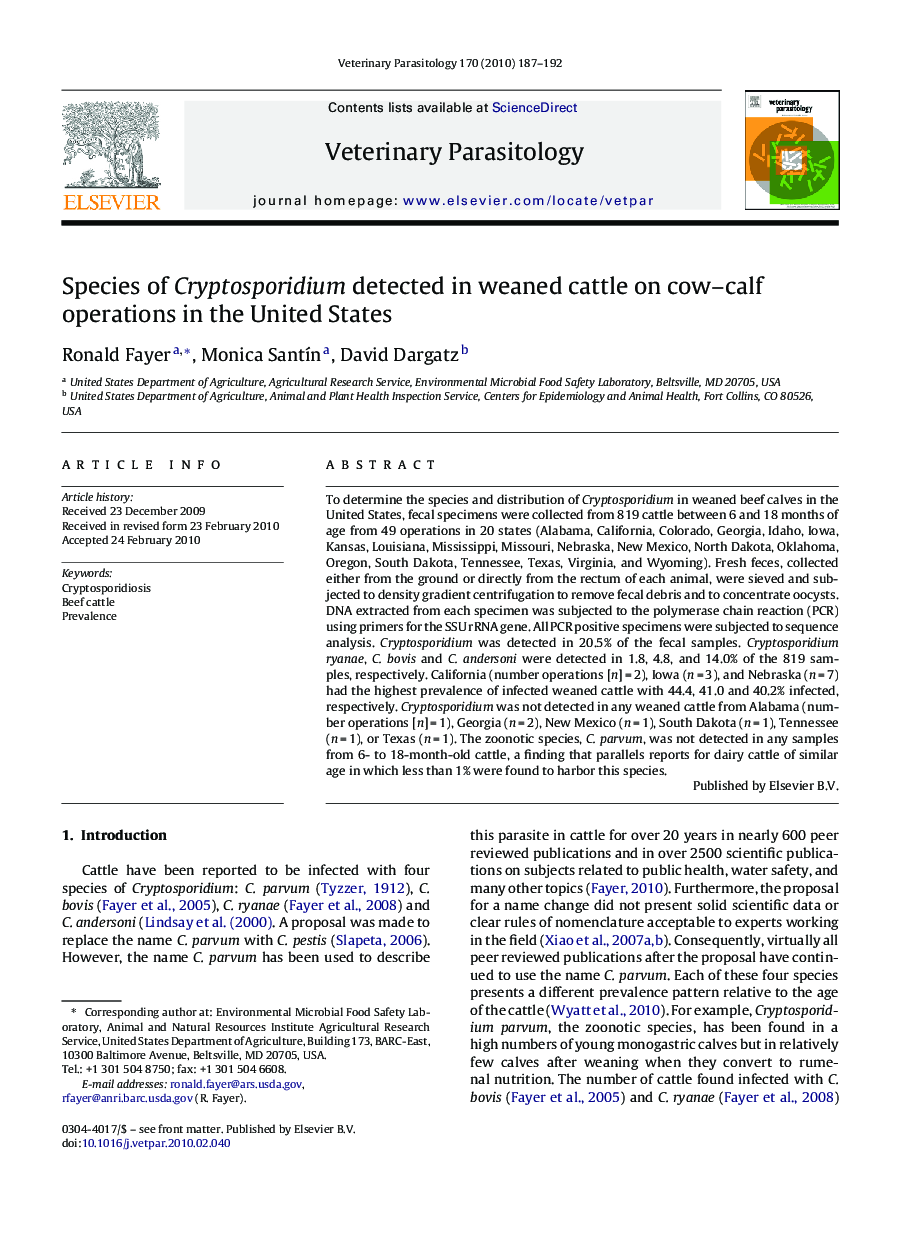| Article ID | Journal | Published Year | Pages | File Type |
|---|---|---|---|---|
| 2470600 | Veterinary Parasitology | 2010 | 6 Pages |
To determine the species and distribution of Cryptosporidium in weaned beef calves in the United States, fecal specimens were collected from 819 cattle between 6 and 18 months of age from 49 operations in 20 states (Alabama, California, Colorado, Georgia, Idaho, Iowa, Kansas, Louisiana, Mississippi, Missouri, Nebraska, New Mexico, North Dakota, Oklahoma, Oregon, South Dakota, Tennessee, Texas, Virginia, and Wyoming). Fresh feces, collected either from the ground or directly from the rectum of each animal, were sieved and subjected to density gradient centrifugation to remove fecal debris and to concentrate oocysts. DNA extracted from each specimen was subjected to the polymerase chain reaction (PCR) using primers for the SSU rRNA gene. All PCR positive specimens were subjected to sequence analysis. Cryptosporidium was detected in 20.5% of the fecal samples. Cryptosporidium ryanae, C. bovis and C. andersoni were detected in 1.8, 4.8, and 14.0% of the 819 samples, respectively. California (number operations [n] = 2), Iowa (n = 3), and Nebraska (n = 7) had the highest prevalence of infected weaned cattle with 44.4, 41.0 and 40.2% infected, respectively. Cryptosporidium was not detected in any weaned cattle from Alabama (number operations [n] = 1), Georgia (n = 2), New Mexico (n = 1), South Dakota (n = 1), Tennessee (n = 1), or Texas (n = 1). The zoonotic species, C. parvum, was not detected in any samples from 6- to 18-month-old cattle, a finding that parallels reports for dairy cattle of similar age in which less than 1% were found to harbor this species.
